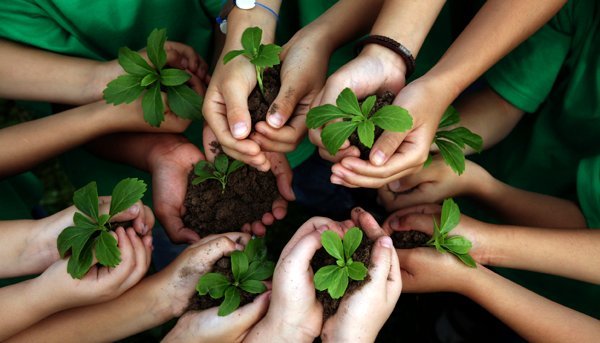By Maria Papagiannopoulou,
Environmental education (EE) connects us to our surroundings by teaching us about both natural and constructed settings. EE fosters awareness of environmental concerns that affect us all, as well as measures we can take to improve and preserve them.
EE offers many benefits for youth, educators, schools, and communities, whether we bring nature into the classroom, take students outside to study, or find impromptu educational moments on a nature walk with our families.
Why do we need Environmental Education?
All life on Earth is supported by the environment. It is a source of nourishment and inspiration for us. A healthy environment is essential to our economy’s success. A growing body of evidence suggests that spending time in nature has physical and psychological advantages. Our personal and cultural identities are frequently linked to our surroundings.
At the same time, it is impossible not to be concerned about the unprecedented environmental, social, and economic challenges we face as a global society — from climate change and the extinction of species and habitats to declining civic engagement, reduced access to nature, a widening gap between the haves and have-nots, and other threats to our health, security, and future survival.
Environmental Education is a process that enables individuals, communities, and organizations to get a better understanding of the environment, develop skills to study it and make educated, informed decisions about how they can contribute to its preservation.
It is a broad umbrella term that refers to the use of education to create a more sustainable future. It is a profession that is focused on employing best practices in education to help promote societal change in order to address the social and environmental concerns that society faces. Environmental educators work with people from several aspects of life.

Benefits of Environmental Education
- Imagination and enthusiasm are heightened. EE is a type of hands-on, interactive learning that encourages imagination and creativity. Students are more eager and engaged in studying when EE is integrated into the curriculum, which improves students’ progress in essential academic subjects.
- Students and Teachers are empowered. Active learning, citizenship, and student leadership are all promoted by EE. It encourages students to speak up and make a difference at school and in their communities. EE assists teachers in expanding their environmental knowledge and teaching abilities.
- Communities are strengthened. Through community involvement, EE promotes a sense of place and connection. When students want to learn more about the environment or take action to improve it, they contact community experts, donors, volunteers, and local facilities to help bring the community together to understand and address environmental concerns that affect their neighborhood.
- Healthy lifestyles are encouraged. EE gets pupils outside and active while also addressing some of the health issues that are prevalent in today’s youth, including obesity, attention deficit disorders, and depression. EE frequently emphasizes good eating, and increasing time spent outdoors reduces stress.
- Responsible action is taken to improve the environment. EE teaches students how their decisions and actions affect the environment, as well as the information and skills needed to address complex environmental concerns and ways to keep our environment healthy and sustainable in the future.

- Biophobia and nature deficit disorder decline. EE encourages sensitivity, appreciation, and respect for the environment by introducing pupils to nature and allowing them to learn and play outside. It simultaneously addresses the problem of ‘nature deficit disorder’ and allows students to enjoy themselves.
- Tolerance and understanding are supported. EE encourages students to look into all sides of an issue in order to have a whole understanding. It encourages tolerance of various points of view and cultures.
- Critical and creative skills of thinking are enhanced. Students in EE are encouraged to conduct research, understand how and why events occur, and make their own conclusions regarding complicated environmental issues. It aims to produce a new generation of educated consumers, employees, policymakers, and decision-makers by developing and refining critical and creative thinking abilities.
- State and national learning standards are met for multiple subjects. Teachers can integrate a great variety of subjects into one rich lesson or activity by introducing EE practices into the curriculum, while still meeting multiple states and national academic standards in all fields. Bringing nature indoors or taking a lesson outside gives a fantastic backdrop or context for interdisciplinary learning.
- Learning transcends the class. EE not only provides opportunities for experiential learning outside of the classroom but also allows students to make connections and apply what they have learned in the classroom to real-world situations. Learners can use EE to see how social, ecological, economic, cultural, and political challenges are all intertwined.
References
- About EE and Why It Matters, North American Association for Environmental Education, Available here
- Environmental Education Must Be Acquired at Earlier Ages, Tehran Times, Available here




